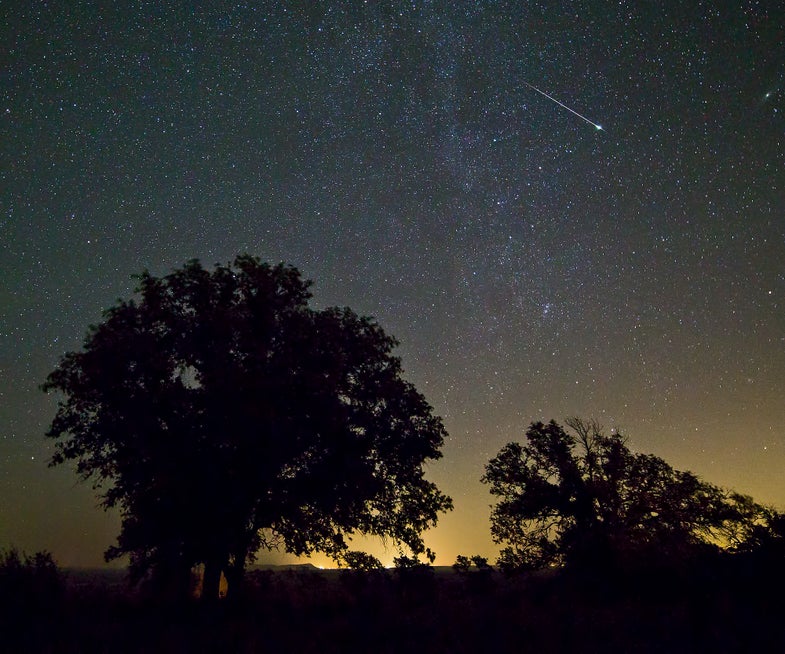60 Tons Of Cosmic Dust Fall To Earth Every Day
Does this mean there are cosmic dust bunnies?

The earth is a dirty place, and we aren’t getting much help from space. Every day, dust from meteorites, comets, and other 4.6 billion-year-old pieces of our solar system fall into the earth’s atmosphere. This meteoric dust is incredibly small, kind of like particles of smoke. But there is plenty of it.
Until now, scientists didn’t know how much of this cosmic dust was gathering on Earth (though they know rather a lot about how much is up in space). Researchers guessed that anywhere between 0.4 and 110 tons of the star stuff entered our atmosphere every day–that’s a pretty wide range. But a recent paper took a closer look at the levels of sodium and iron in the atmosphere using Doppler Lidar, an instrument that can measure changes in the composition of the atmosphere. Because the amount of sodium in the atmosphere is proportional to the amount of cosmic dust in the atmosphere, the researchers figured out that the actual amount of dust falling to the earth is along the lines of 60 tons per day.
Guess it’s time for some spring cleaning! But don’t get out the dust rag just yet. The dust that falls to earth can be surprisingly helpful to the environment, not only helping to build up clouds in the atmosphere, but also helping to fertilize plankton in Antarctica.